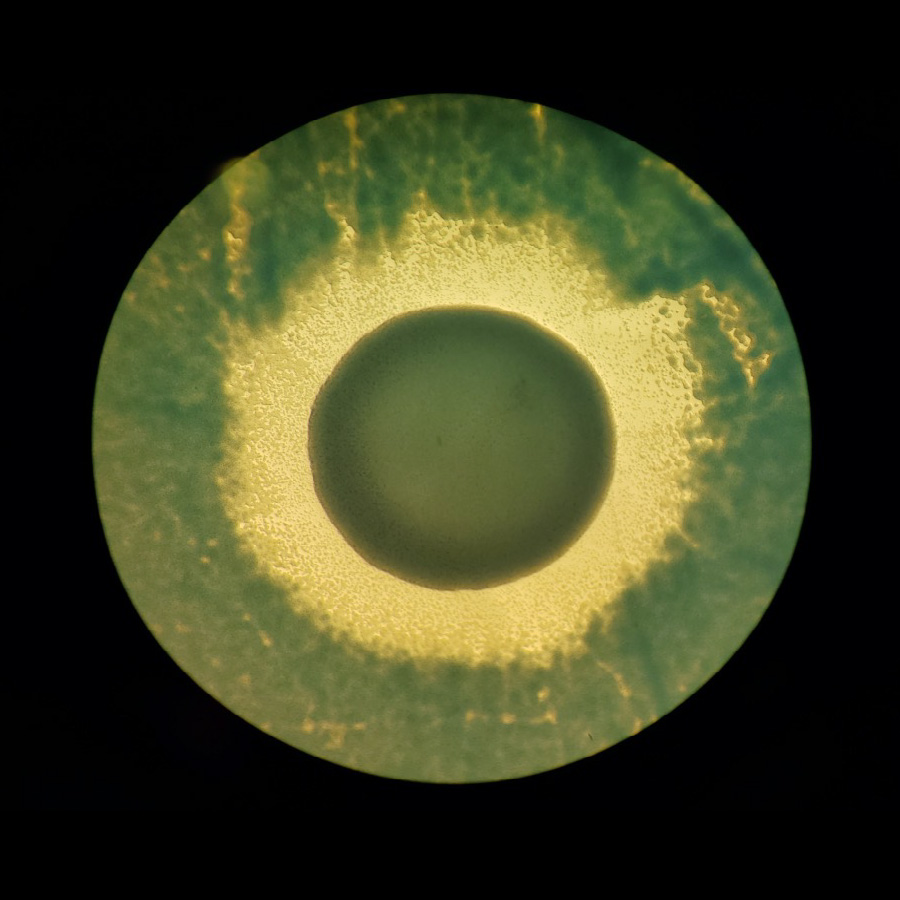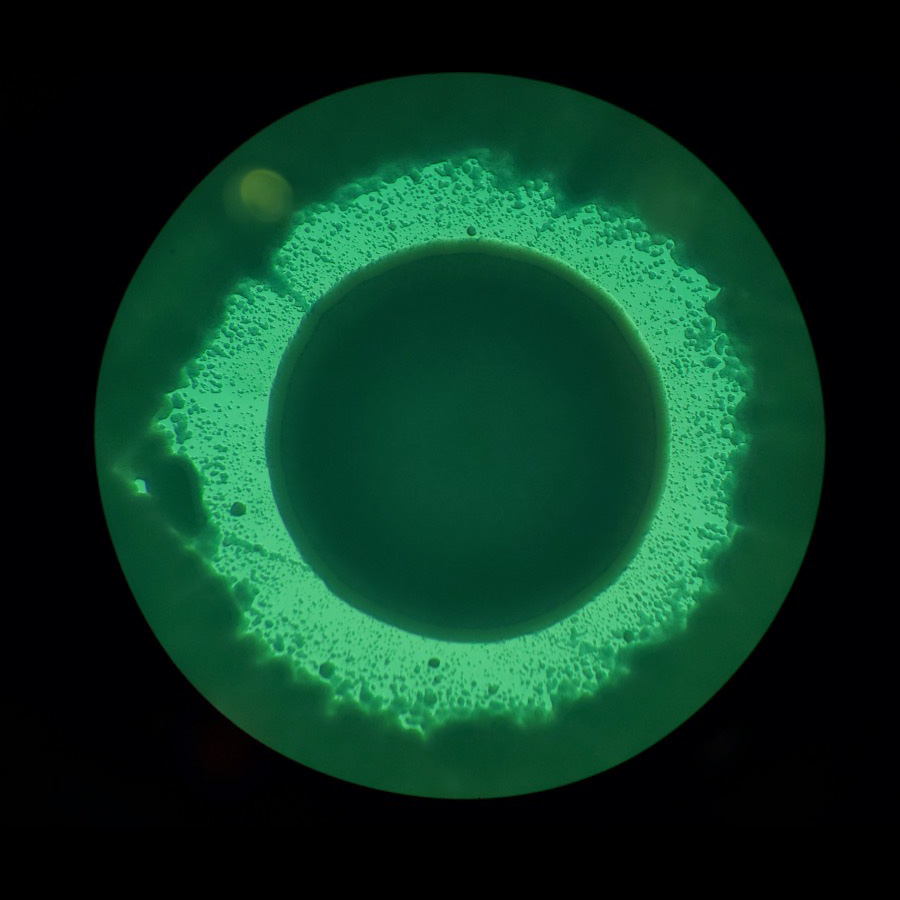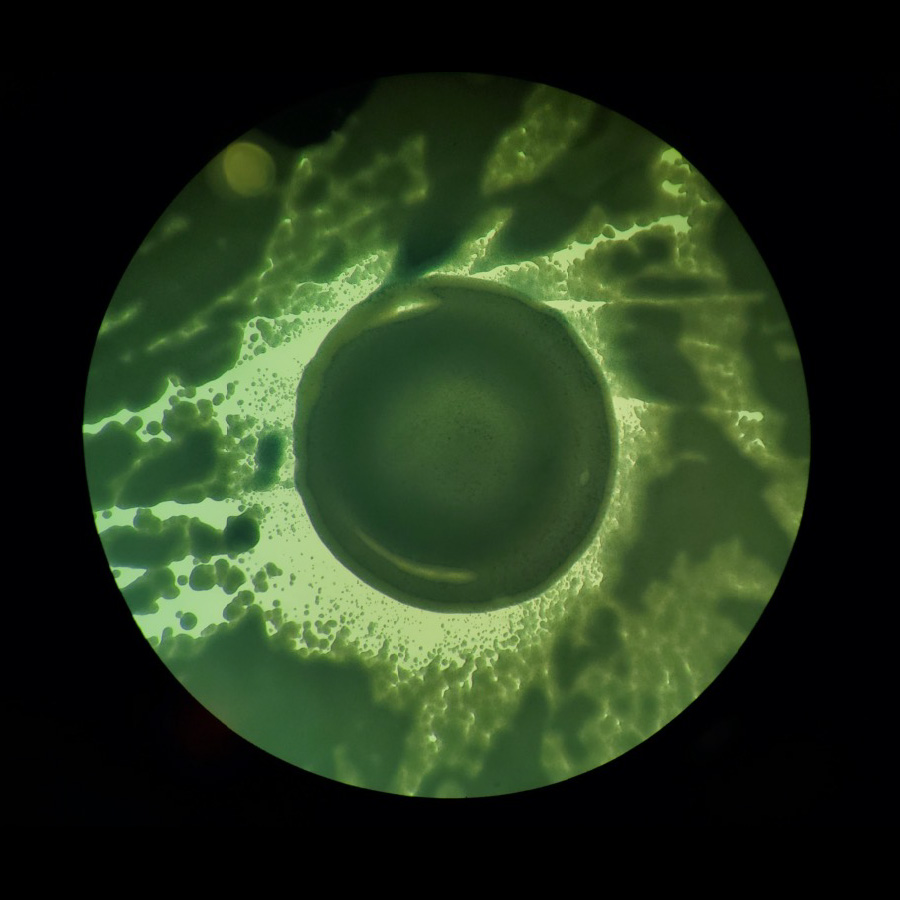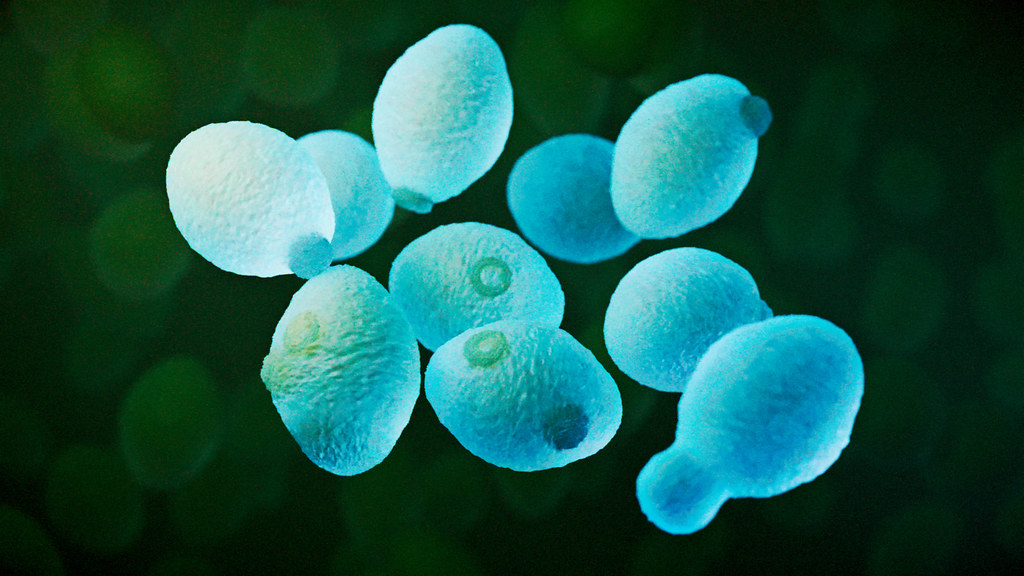NIH researchers discover new gene involved in a toxic competition among yeast
Newly discovered gene helps some yeast endure toxins and can help scientists understand toxin resistance.
Yeast Toxin Images

Killer yeast colony on sensitive yeast
Pictured is a colony of yeast secreting a toxin that kills neighboring yeast cells. The neighboring cells here are very sensitive to the toxin, creating a large zone around the colony where they cannot grow. Credit: Ilya Andreev, NHGRI.
Download from Flickr.com

Killer yeast colony on sensitive yeast
Pictured is a colony of yeast secreting a toxin that kills neighboring yeast cells. The neighboring cells here are very sensitive to the toxin, creating a large zone around the colony where they cannot grow. Credit: Ilya Andreev, NHGRI.
Download from Flickr.com

Killer yeast colony on partially sensitive yeast
Pictured is a colony of yeast secreting a toxin that kills neighboring yeast cells. The neighboring cells here are partially sensitive to the toxin, creating a small zone around the colony where they cannot grow. Credit: Ilya Andreev, NHGRI.
Download from Flickr.com
We’re interested in understanding how genomic variation leads to differences between individuals, so in this study, we’re looking at the most basic biological mechanisms underlying resistance to toxins in simple organisms, such as yeast. A particularly important way that organisms vary is in how much they’re affected by toxins.
In this current study, NHGRI researchers analyzed yeast infected with a virus that causes the yeast to secrete a lethal toxin called K28. The virus does not negatively affect the infected yeast. Instead, infected yeast are also resistant to the toxin’s effects.
These infected yeast secrete the K28 toxin to wipe out non-infected yeast growing nearby. This provides the infected yeast an evolutionary advantage in the competition for resources. However, some non-infected yeast grow despite the presence of the toxin.
To find out how these non-infected yeast resist the toxin, the researchers exposed different non-infected yeast to the K28 toxin. Those unaffected by the toxin were classified as highly resistant and the affected ones as sensitive. Then, the researchers compared the genomes of resistant versus sensitive yeast to identify which genes confer resistance to the toxin.
Through this analysis, the researchers determined that the KTD1 gene provides resistance to the K28 toxin. “This gene has never been studied before,” said Sadhu. “Identifying this gene is the first step to fully understanding what is happening on the molecular level.”
The researchers then attached a glowing protein to the KTD1 protein to track its position in the yeast cells. They found that the KTD1 protein resides on the surface of cellular compartments called vacuoles. Vacuoles serve many purposes in the cell, including isolating and degrading harmful substances like toxins.
To wreak its toxic effects, the K28 toxin must move freely around the cell. The researchers hypothesized that the KTD1 protein may be involved in sequestering the toxin in the vacuole.
A region of the KTD1 protein pokes into the center of the vacuole, where it could interact with trapped toxins. By analyzing the protein sequence, the researchers found that this region of the KTD1 protein is under strong evolutionary pressures.
These strong evolutionary pressures point to this region’s importance for the KTD1 protein’s function and highlight the competition between the toxin and the yeast. However, more research is needed to understand how this region of the KTD1 protein keeps K28 in check and how K28 may evolve in response.
“The intricacies of genomics that mediate these within-species battles are beautifully revealed by a study like this,” said Charles Rotimi, Ph.D., scientific director of the Intramural Research Program at NHGRI. “While this is a yeast story, the mechanisms will surely influence studies on toxins and their effects on humans.”
Last updated: February 22, 2023

